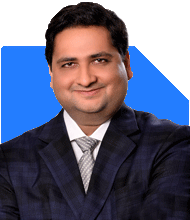Hardik Parikh | Answer |Ask -Follow
Tax, Mutual Fund Expert - Answered on Jul 27, 2023
He also holds an MBA degree from IIM-Indore.
Hardik, who began his career as an equity research analyst, founded his own advisory firm, Hardik Parikh Associates LLP, which provides a variety of financial services to clients.
He is committed to sharing his knowledge and helping others learn more about finance. He also speaks about valuation at different forums, such as study groups of the Western India Regional Council of Chartered Accountants.... more

how to address change in gross income given by employer in Form 15
If there's a change in your gross income that impacts the details you've provided in Form 15G or 15H, you should inform your employer or the entity that's deducting the TDS. You may need to submit a new Form 15G or 15H with the updated income details.
Remember, these forms are used to declare that your income is below the taxable limit and that no TDS should be deducted from your income. If your income changes and it's now above the taxable limit, it's important to update this information to avoid any issues with the Income Tax Department.
Please consult with a tax advisor or chartered accountant to ensure you're following the correct procedures. This is just a general advice and the actual process may vary based on your specific situation.
I hope this helps!
You may like to see similar questions and answers below
Mihir Tanna |1090 Answers |Ask -Follow
Tax Expert - Answered on Jul 21, 2023
Purshotam Lal |70 Answers |Ask -Follow
Financial Planner, MF and Insurance Expert - Answered on Dec 23, 2025
Purshotam Lal |70 Answers |Ask -Follow
Financial Planner, MF and Insurance Expert - Answered on Dec 23, 2025
Samraat Jadhav |2522 Answers |Ask -Follow
Stock Market Expert - Answered on Dec 23, 2025
Samraat Jadhav |2522 Answers |Ask -Follow
Stock Market Expert - Answered on Dec 23, 2025
Samraat Jadhav |2522 Answers |Ask -Follow
Stock Market Expert - Answered on Dec 23, 2025
Samraat Jadhav |2522 Answers |Ask -Follow
Stock Market Expert - Answered on Dec 23, 2025
Samraat Jadhav |2522 Answers |Ask -Follow
Stock Market Expert - Answered on Dec 23, 2025
Dr Nagarajan J S K |2578 Answers |Ask -Follow
NEET, Medical, Pharmacy Careers - Answered on Dec 23, 2025
Samraat Jadhav |2522 Answers |Ask -Follow
Stock Market Expert - Answered on Dec 23, 2025
Ramalingam Kalirajan |10924 Answers |Ask -Follow
Mutual Funds, Financial Planning Expert - Answered on Dec 23, 2025

























